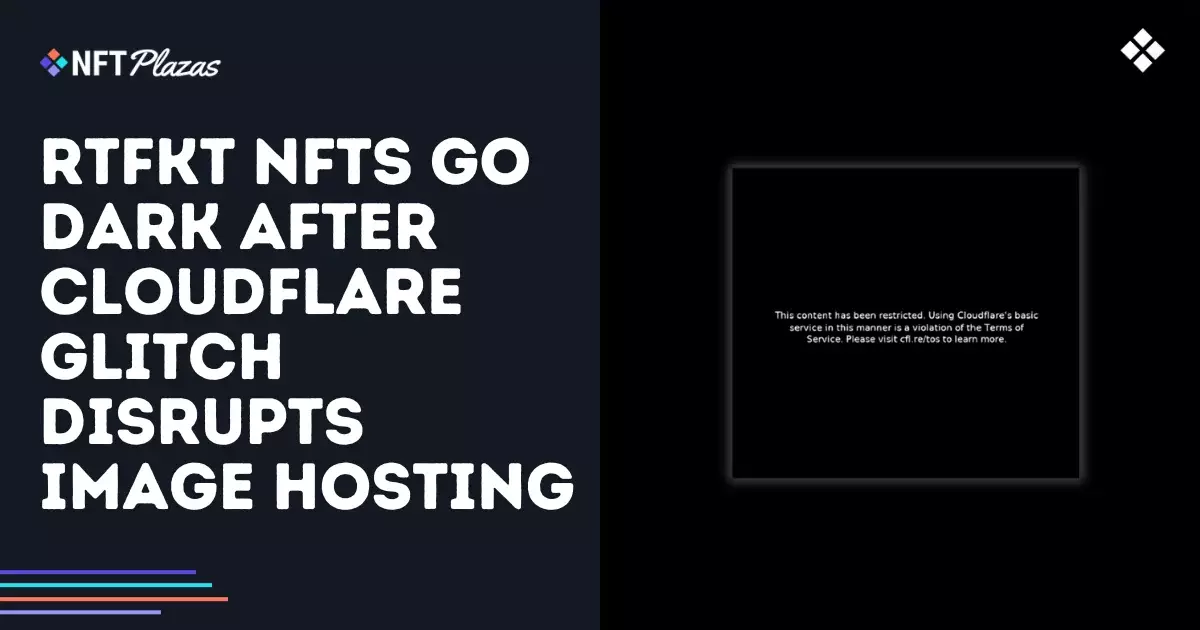On April 24, 2024, a peculiar incident shook the NFT community, particularly impacting fans of the acclaimed Ethereum collections, Clone X and Animus. Collectors eagerly accessing their digital assets were met with an unsettling sight—blank screens that simply bore the stark message of a terms of service violation. This technical hiccup was the domino that fell after the controversial closure of RTFKT, a digital studio absorbed by Nike in late 2024. While ownership records remained untouched on the blockchain, the episode starkly revealed the fragility of external hosting solutions in the NFT landscape.
Centralization’s Nightmarish Trap
This debacle was a pivotal warning regarding the perils of centralization in the crypto realm. As with many other emerging technologies, the convenience of third-party hosting—specifically via platforms like Cloudflare—turns out to be a double-edged sword. Instead of the claimed permanence and security that blockchain technology promises, NFT owners were stripped of access to their media due to a simple service downgrade. This incident serves as an essential alarm bell for collectors, reminding them how reliant their perceived ownership has become on external entities that can suddenly pull the plug, leaving them with digital voids.
Samuel Cardillo’s Solution: A Step Towards Decentralization
Amidst the digital chaos, RTFKT’s former Head of Technology, Samuel Cardillo, emerged with a plan. He announced a migration to Arweave, a decentralized storage platform designed to ensure unique and perpetual file retention. Cardillo’s initiative to relocate approximately 200GB of NFT-related images signifies a pivotal shift that reflects greater maturity within the NFT space. This progressive move towards Arweave not only provides a more sustainable mechanism for accessing digital files but also signals an alarming realization: blockchain technology’s promise cannot be fully realized while tethered to the whims of centralized services.
The Economic Implications of Digital Asset Management
Transitioning to a more reliable and decentralized storage solution comes with its own financial burdens, estimated at around $2,800. In the grand calculus of NFTs, this may appear trivial compared to the speculative winds pushing valuations in the market. However, for many collectors, the recent events draw into sharp focus the harsh reality of their investments. This juxtaposition of hope and uncertainty begs collectors to reconsider their approach, placing a premium on the integrity and dependability of their holdings over hasty investments in hype-driven assets.
A Call for Collector Vigilance
For the savvy NFT collector, this incident serves as a primary lesson about the balance of trust and technology in an era where digital ownership claims risk being undermined by service outages. The accompanying financial costs incurred by migrating to decentralized platforms advocate for a thorough reassessment of priorities. Moving forward, it’s imperative that enthusiasts and investors alike remain vigilant. The NFT space demands a discerning eye on the technological fabric that supports what we perceive as ownership, as past experiences like the RTFKT incident remind us—we might just be one service downgrade away from losing access to our supposed treasures.


Leave a Reply